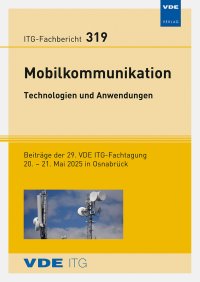Comparative Analysis of Optimization and Machine Learning Methods for Beamforming and Power Control in Urban Environment
Konferenz: Mobilkommunikation - 29. ITG-Fachtagung
20.05.2025-21.05.2025 in Osnabrück
Tagungsband: ITG-Fb. 319: Mobilkommunikation – Technologien und Anwendungen
Seiten: 6Sprache: EnglischTyp: PDF
Autoren:
Geranmayeh, Parmida; Grass, Eckhard
Inhalt:
Optimization methods are crucial for enhancing the performance of 5G and 6G networks, particularly for beamforming and transmission power control, which ensures efficient spectrum utilization, high data rates, low latency, and improved reliability. These optimizations reduce interference, maximize capacity, and conserve energy. To achieve these goals, integrating Machine Learning (ML) and Artificial Intelligence (AI) into optimization frameworks has become vital. ML-driven techniques enhance adaptive optimization, allowing real-time adjustments for beamforming and power control. This article investigates how optimization and ML methods can balance the requirements of accurate beamforming and controlled transmission power, achieving high-quality signal transmission with reduced interference. By comparing these methods with random-based approaches, we aim to demonstrate their faster achievement of higher accuracy. The study is conducted using an urban environment of Northeast Berlin to simulate realistic scenarios, focusing on identifying the optimal beamforming angles that reduce transmission power in limited timeframes. This comparison highlights the effectiveness of these techniques in achieving precise, high-performance results for modern wireless networks, emphasizing the practical impact of optimization and ML in addressing the challenges of next-generation network demands.


